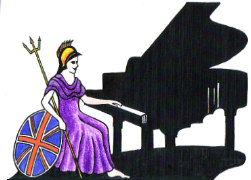Teachers, Accompanists and Piano Entertainers in the UK

UK Piano Page

3a Red Brae Drumalig Road
Temple
Antrim, County Antrim Bt27 6UD
Northern Ireland
Specialising in top quality mint condition used
131 Moneynick Road
Randalstown, County Antrim BT41 3HU
Northern Ireland
We Keep a wide range of upright and grand pianos
Islington, London N5
England
AMH Pianos Offers piano moving and piano disposal
Newham, London E6
England
London borough of Newham piano removals and piano
Woodacre Farm
Warrington Road
Lymm, Cheshire WA139BT
England
As well as a large selection of New and
Music Festival for performers and guests Our 10th
18-06-2022 12:30PM
The Morecambe Bay Piano Group was set up to extend
11-12-2021 01:00PM
The Morecambe Bay Piano Group was set up to extend
08-01-2022 01:00PM
The Morecambe Bay Piano Group was set up to extend
12-02-2022 01:00PM